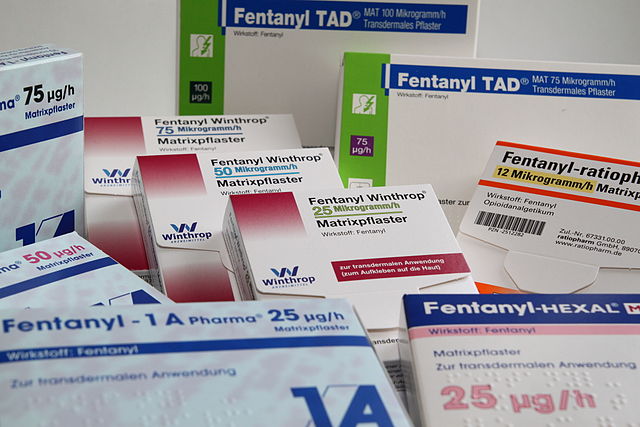A multidisciplinary research team published an article in the World Medical and Health Policy on whether industry-funded continuing medical education modules (CMEs) contain biased material. Thirty-eight participants, ranging from physicians to research assistants, read a non-industry article or an industry-funded article on pain management with opioids. Twenty-three of these individuals assessed critical messages in the texts. Participants who read the industry-funded article, which never mentioned the word ‘death’ and mentioned ‘breakthrough pain’ 55 times, were more likely to view opioids in a more positive light as compared to those who read the non-industry article.
“[P]articipants who read a non-industry-funded article on opioids for non-cancer pain indicated understanding of the risk of addiction or death associated with opioids and the unproven efficacy of opioids in chronic non-cancer pain,” wrote the researchers.
“In contrast, those who read an industry-funded article largely failed to mention addiction or other serious adverse effects, instead focusing on the benefits of opioids and specifics of [breakthrough pain] as a discrete disease state.”

While opioids are useful and appropriate in treating pain in cancer and some acute conditions, there has been a concerted effort to push opioid use on physicians for non-cancer pain; by branding pain as the fifth vital sign and condemning opiophobia, opioid use for non-cancer pain significantly increased in the ’90s. One such branding campaign was ‘breakthrough pain’ (BTP), defined as “a transitory increase in pain to greater than moderate intensity… which occurred on a baseline pain.”
In 2007, Fentanyl, which was approved by the FDA to reduce pain in cancer patients, was promoted in lozenge form to treat non-cancer BTP. Despite the promotion, it did not gain regulatory approval, though this did little to deter manufacturers of the drug. In a Pipeline Insight, they wrote, “A key growth strategy will be to gain initial approval for cancer breakthrough pain and then drive sales in additional indications through off-label use or regulatory approval.”
There was indeed extensive use of the tablet off-label, causing the US Department of Justice to order the manufacturers of the tablet to pay a $425 million fine to resolve claims of marketing the tablet and other similar drugs for an unapproved use.
The manufacturer also funded CME programs to promote off-label use of their drugs. CME is often used to promote drugs for unproven use and is done in a way that does not directly break the law. The current study aimed to assess whether an industry-funded CME module had subtle marketing that promoted opioid use as compared to a non-industry funded article.
To do this, the authors first chose a comprehensive CME on BTP, “Persistent and Breakthrough Pain,” which was funded by the lozenge manufacturer and CME-accredited by Johns Hopkins University. Ostensibly, the goals of this module included learning about BTP, tailoring pain treatment, and identifying risk assessment and management strategies for opioid therapy.
The authors initially aimed to find a non-industry CME module on BTP but were unable to do so after an extensive search, instead finding all CME modules to be funded by opioid manufacturers. Instead, the team chose a clinical practice guideline entitled “Opioids in the Management of Chronic Non-Cancer Pain: An Update of American Society of the Interventional Pain Physicians’ (ASIPP) Guideline.” While not totally parallel in purpose to the CME module, both centered on the use of opioids in treating non-cancer pain.
Thirty-eight participants were then randomized to read one of the two articles and take the test that came with the CME module. Twenty-three of those participants were asked to summarize the main points of the article, and 15 were asked whether they thought they received the industry article. The authors also conducted a basic text analysis on each module.
Unsurprisingly, participants in the industry-funded article improved more on the test, which was designed for their module. However, the summaries of key messages vastly differed by group. 9/12 participants who read the non-industry funded article indicated that the effectiveness of opioids in treating pain was unclear, compared to none of those in the industry-funded group, who viewed opioids more positively.
8/12 individuals in the non-industry group identified opioid abuse or addiction as a critical point, compared to 3/11 in the industry-funded article. 4/7 correctly identified themselves as being in the non-industry group, whole 3/7 correctly identified themselves as being in the industry group, indicating that blinding was preserved. The industry article mentioned BTP 55 times, rapid onset opioids (ROOs) 13 times, fentanyl buccal tablet (FBT) 31 times, and never mentioned death; this is contrasted to the non-industry article mentioning BTP once, never mentioning ROOs, once mentioning FBT, and mentioning death 26 times. The industry-funded module encouraged the off-label use of opioids, as 7/9 case studies addressed off-label uses for non-cancer pain.
“Messages retained by readers of an industry-funded CME module appeared to encourage the use of opioids for noncancer pain, and minimized adverse effects,” write the authors.
“Vetting bias should not be left to learners, who underestimate bias and arguably cannot determine whether or not the information they have received is supported by evidence.”
Serious side effects, such as addiction and death, were brought up far more frequently in the non-industry article, while the industry article highlighted minor side effects. The authors concluded that the industry-funded article, even though it didn’t mention brand names, served to market the company who funded the CME.
Furthering this point, the authors cite an anonymous pharmaceutical executive, who wrote, “CME contributions are commercial decisions. Commercial does not equal unethical or lacking in value, but it does represent a focus on a particular business objective. The nature of the return may be subtle, nonbranded, or indirect.”
This study provides further support to the claim that industry-funded CME contains marketing messages for specific drugs; physicians who avoid sponsored CMEs prescribe fewer branded prescriptions and more generic medications.
“Differences in presentation of adverse events between the industry-funded and non-industry-funded modules may make a difference in how harms are perceived by learners,” write the authors.
“The industry-funded module may have minimized learners’ perceptions of adverse events, including addiction and death. Misperceptions about the addictive properties and adverse effects of opioids may lead to increased comfort with prescribing or continuing to prescribe opioids to patients for whom the benefits may not outweigh the risks.”
The authors suggest that promotion of off-label opioid use via CME is a form of condition branding, a marketing strategy that creates a disease awareness (such as pseudo-addiction or BTP) of a specific disease state, linking a condition to a particular treatment without directly mentioning the treatment. While illegal to market drugs without regulatory approval or for off-label use, it is within the law to market a disease however manufacturers choose. Social anxiety disorder, for instance, was invented as a marketing campaign for Paxil, impotence rebranded Erectile Dysfunction to market Viagra, and heartburn became Gastroesophageal Reflux Disease to sell Prilosec and Nexium. The industry CME module, the authors purport, may be designed to lead physicians to believe BTP is a separate condition despite it lacking a formal diagnosis.
Commercial funding of CME is not a new phenomenon, but existing tools are not equipped to identify subtle biases that this funding creates. While exhaustive and elaborate, the authors suggest their method of text analysis and key message summary may be necessary to uncover commercial bias further. Alternatively, the authors suggest eliminating commercial funding for CMEs entirely.
“It is vital that CME provides information that is evidence-based, accurate, and balanced,” the researchers conclude.
“CME affects physician practice, patient care, and public health. As an anonymous pharmaceutical executive states, ‘CME is diminished by dependence on funds deriving from commercial interests … CME is not compatible with commercial intervention’. The argument that commercial funding is needed for CME is untenable when one understands that commercially-funded CME will always support commercial goals.”
****
Infeld, M., Bell, A., Marlin, C., Waterhouse, S., Uliassi, N., & Fugh-Berman, A. (2019). Continuing Medical Education and the Marketing of Fentanyl for Breakthrough Pain: Marketing Messages in an Industry‐Funded CME Module on Breakthrough Pain. World Medical & Health Policy. 11. 43-58. 10.1002/wmh3.290. (Link)















The real surprise is how this group actually had to do a study to see if the industries in question were pushing products in their alleged educational materials. An even bigger surprise would be if the manufacturers DIDN’T try to push their products this way.
Report comment
Yeah, kind of like “researchers discover that planting strawberry plants frequently leads to strawberries growing.” When you set up incentives to cheat, people are more likely to cheat. No research needed.
Report comment
Exactly. Research is getting seriously bizarre, man– the signal-to-noise is getting to be a real problem. Is anyone vetting these research designs?
I have the vague sense that there must be an endless pool of money for anything that promotes antiopioid hysteria, but, OTOH, yours truly has been known to be a little paranoid about such things.
Report comment
I was taught, as a marketing major, that false marketing was illegal in college. What ever happened to that concept?
Report comment
“Thirty-eight participants were then randomized to read one of the two articles and take the test that came with the CME module. Twenty-three of those participants were asked to summarize the main points of the article, and 15 were asked whether they thought they received the industry article. “
Why did they even bother doing this study?? They only recruited 38 participants! A study with n = 38 is barely above anecdote, the results easy to dismiss as incidental, nowhere near conclusive evidence of anything. And then, instead of having ALL of them summarize the main points AND guess whether the article was industry-funded, they split the 38 into two groups, n = 23, and n = 15. Pointless!
Report comment
Ya– seems like it would be possible to do some kind of study about something with n=32, but not this one! Outcome measure seems really… er, amorphous. “Positive” vs. “Unclear” = Huh?!
Report comment
This is as stupid as letting car manufacturers conduct all the safety tests on the cars they put out to market and not having anyone else hold them accountable. Conflict of interest should be obvious.
Time for Big Pharma to recuse themselves from judging products safe. But, since they won’t, they must be forced to.
Report comment
By law, Big Pharma doesn’t judge products safe, that’s the FDA’s job. The drug company designs and runs the drug development program in accordance with the regulations and guidance from the FDA (as well as international conventions [eg, ICH]).
That doesn’t, of course, eliminate the bias inherent in having pharmaceutical companies run these programs; however, in the United States, capitalism drives the system and having totally unbiased clinical development programs would involve dismantling the entire system.
The cost of a Phase 3 confirmatory clinical study is currently around 20 million dollars or higher, depending on the therapeutic area and patient population. Most drug applications require two of these Phase 3 studies along with the preliminary Phase 1 and Phase 2 studies as well as all of the required nonclinical (animal) work and formulation development. An entire program for a new drug (not a generic or “me too” drug or a reformulation to maintain patent protection) can easily run $200 million. Who’s going to cover this cost?
As it stands, many small research groups developing truly innovative medications perform all of the early development and then need to find funding to proceed. Government funding is scarce, so many turn to partnerships with or acquisition by large pharmaceutical companies when their drugs show promise.
Report comment
The other problem is that the FDA is often staffed with people who come directly from the pharmaceutical industry. There is a lot of pressure to approve things that are not effective and/or to minimize the adverse effects.
Report comment
Steve – my observation has been that it usually runs the other way. Folks start at FDA with no industry experience. The pay is crap, but they can retire with full benefits fairly young and then segue to a job with a pharmaceutical company or as a “consultant”…which is a significant increase in pay (especially with the words “former FDA…” in your CV). This, of course, might influence a reviewer.
I think the approval of drugs that are not effective and the minimization of adverse events has more to do with “creative” study designs and the misuse of statistics than bias on the part of the reviewers. For example, with an antidepressant study, certain symptoms, such as suicidality, might be considered an exacerbation of depression and, per the protocol, not recorded as an adverse event. Another example is, for efficacy, a drug may be shown to be statistically significantly more efficacious than placebo – but the efficacy rate is only 20%. In the United States, there is no requirement that a low efficacy rate be clinically relevant – especially if the safety profile is considered acceptable.
Report comment
Cronyism.
Report comment
Yes, totally obvious. We now have a bizarro world where what (corporate-sponsored) literature tells us are safer drugs are often what clinical experience suggests are more dangerous drugs. It’s reached the point where any time I hear of some great new drug, my first thought is, “It probably sucks” — which can be a dangerous bias in and of itself. No matter how hard you try to keep your head screwed on straight about what is and is not good science, read enough crap test results and literature, and it will eventually warp your judgment.
Report comment
A couple of points:
• I was impressed that the authors of this article recognize that pharmaceutical companies are inventing diseases to sell drugs – what I call “creating the need, then filling it”. When I worked at a large pharmaceutical company in Indiana, that company had a blockbuster antidepressant that was going off patent. They created a disorder called Premenstrual Dysphoric Disorder” (PMDD), reformulated their antidepressant, colored it pink and rebranded it with another name.
• Medical doctors are required to have CMEs to maintain their licenses (similarly, therapists and social workers are required to have CEUs). According to the article below, that while most doctors recognize that CME sponsored by pharmaceutical companies are biased, the majority don’t want to pay the extra cost for non-sponsored CME.
https://www.boardvitals.com/blog/industry-sponsored-vs-fee-based-cme/
• Most pharmaceutical companies (at least the mid- to large size) have medical writing groups that create not only CME but also “ghost write” the publications that present study results. They then have some of the more prominent clinical investigators or industry thought leaders listed as the authors. You can usually find the actual author listed in small print under Acknowledgements. At least, now, the major peer-reviewed journals are listing each author’s affiliation and any potential conflict of interest.
Report comment
Great summary of KOLs, Sleep, thanks. Stumbled across this article as well:
https://thepeopleschemist.com/fraud-in-medical-journals/
Fortunately, as an LMFT, the situation is not quite as bad. My local licensing board has a LOT of options for getting CEUs, though your point still holds– the cheaper ones seem to be sponsored by someone, or to be shilling some kind of “evidence-baste” (baste your intervention in ‘evidence’!) treatment model that I suspect was developed by folks on some kind of gravy train, whether public or private sector. If I REALLY want to spend a pile of dough– which, actually, I do in this situation– I can pay an outfit that will let me read a book of my own choosing and write an essay on it. (They vet the book and make sure it’s relevant to my scope of practice, and give me a pass/fail grade on it.) Of course, I suppose there are people who game the system by just skimming the book or something, but I figure that if I’m paying the money, I might as well learn the material. For required topics like ethics and the law, there are mainstream standardized courses that are quite dull, but that test facts and reasoning skills surprisingly well.
Report comment
It is dangerous to forbid opiods. People might think that they have no freedom. Look what happens now in the post-soviet countries, any opioids are banned, even if you have unbearable pains, it is very difficult to get a pain reliever.
Report comment